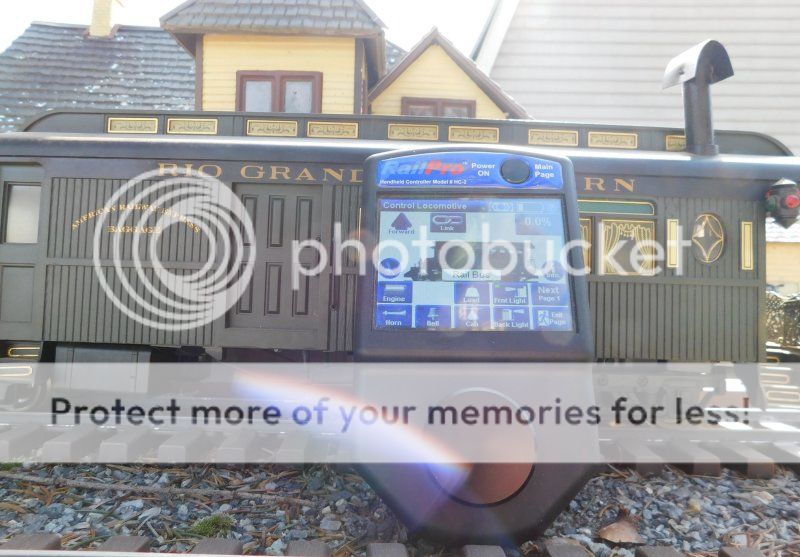Michael Kirrene said:
Michael Glavin said:
Can those of you with a RailPro system offer their experience with outdoor radio range? Please share loco info i.e., plastic shell/body and or metal. Specifically interested battery powered loco’s, but track power info is appreciated as well.
Michael, per Ring Engineering:
The radio works in the 2.4GHz frequency band (same as Revo). You can control locomotives on big layouts with outstanding control using Direct Radio. The Direct Radio signal can reach over 100ft in an open environment (same as Airwire).
Yesterday, I experimented with distance and operated a RailPro equipped USAT GP9 in my back yard while standing with the controller in my front yard. No problem at all with signal loss.
https://www.ringengineering.com/RailProFrequentlyAskedQuestions.htm
Michael,
Thanks for your input. Can I assume part of your home/garage was between you and the GP9?, or your engine was not within your line of sight. Can you estimate the range in feet?
As I alluded to in my previous post I contacted Ring Engineering. I inquired about range and a few other things. Rings response below in quotes.
“Our handheld controller and a loco with G controller outside has a typically range of 60 to 70 feet. RailPro supports networking and repeaters. You can add up to for repeaters to the systems. Repeaters can extend the RF range. One repeater placed half way between the handheld controller and loco could extend the range to 120 to 140 feet. The handheld controller can transmit to the repeater and the repeater transmits to the loco. All you do is select what products to use as a repeater. The RailPro system will try to do a direct radio connection to the loco and if that is not working it will automatically try any repeaters. Our PWR-56 can be used as a repeater.”
Having spent several decades in R/C model industry I’m pretty well versed in 2.4GHz systems. The most common type is known as Direct Sequence Spread Spectrum (DSSS). This means the transmitter and receiver operate within a designated part of the 2.4GHz spectrum. In laymen’s terms, the TX uses a wide cross section of the 2.4GHz band to communicate with the RX, verses the typical FM/PCM equipment. What this means is the TX spreads it’s signal over a wider swath of said frequency band as compared to FM/PCM systems utilizing a narrow band of frequencies’. End result is a radio link that is nearly impervious to interference, with headroom to absorb and work threw interference and equipment operating on the same frequency. All that said range seems a bit anemic with respect to 2.4GHz RC models. In my circumstance it looks like I’ll have to employ repeaters to realize the range I’m seeking with the RailPro system but I am confident I won’t have issues with interference and metal shells.
FWIW: I have “train” RC systems from all the major players in said industry. Loco Linc, Train Engineer, Revolution, AirWire, QSI, S-Cab, pre 2.4Ghz RCS and a few other odd balls as I recall. They all work, some better than others and range is nothing to brag about. The newer stuff is definitely more impervious to interference. I anticipate giving a RC Model airplane 2.4Gz system a ride sooner than later, I suspect range is considerably better therein, as it should be… Thing is I like RC Plane TX’s for flying and find them a bit obnoxious for trains so haven’t gone there. So I’ll have to try Tony of RCS Australia’s new 2.4GHz DSM2 TX handpieces…
Michael
